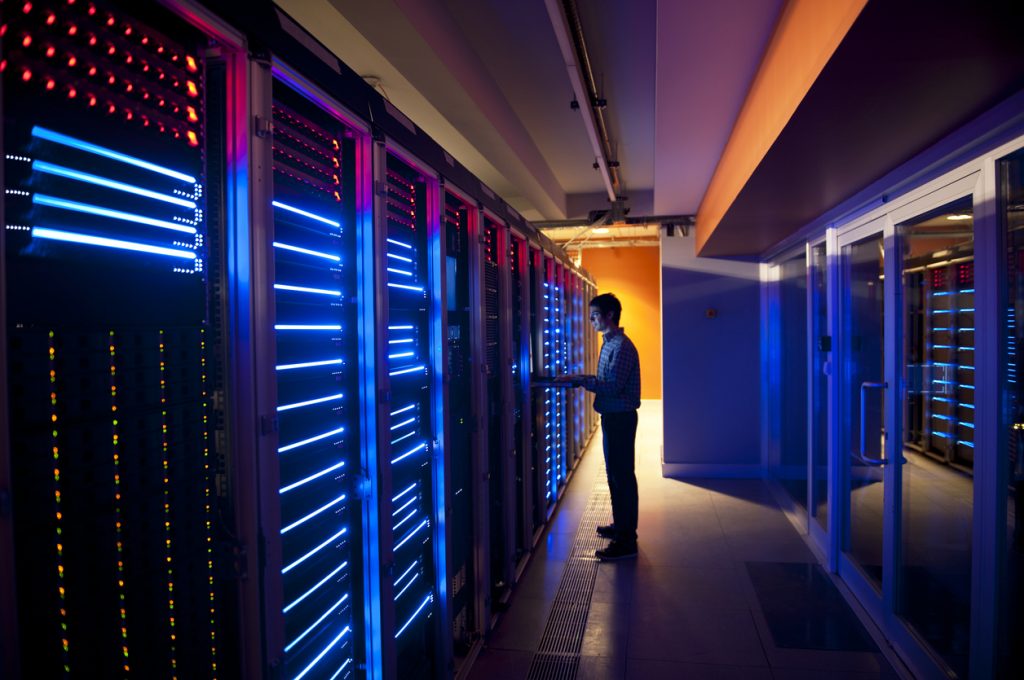Win the Battle Lose the War
- Maj Gen P K Mallick,VSM (Retd)
- Maj Gen P K Mallick,VSM (Retd)
During the later part of Obama Administration Ashton Carter was appointed as Secretary Defence. He had a very impressive track record, his CV spoke for him.
Very quickly he grasped the major issues confronting Dept of Defence. He initiated the Third Offset Strategy. Third Offset Strategy was an attempt to offset shrinking U.S. military force structure and declining technological superiority in an era of great power competition—a challenge that military leaders have not grappled with in at least a generation. The third offset investments fall into six targeted areas: anti-access and area-denial, guided munitions, undersea warfare, cyber and electronic warfare, human-machine teaming, and wargaming and development of new operating concepts. Much of it is weighted toward the Air Force and Navy. Tradeoffs were made among many programs to finance the new emphasis on next-generation breakthroughs that might begin to restore American military technological superiority toward the latter end of the 2020s.
In late 2016, then-Secretary of Defense Ashton Carter outlined a broad strategy to address five “immediate, but distinct, and evolving challenges.
The inherently human nature of war has changed little over many millennia. Influence operations, propaganda, disruptions of order, political subversion, psychological operations, etc., have been part of conflict since time immemorial. Nonetheless, forces are afoot that may affect the character of war (how wars are conducted) and strategic competition in complicated ways across the “continuum of conflict.” They include:
• The pace of technological change
• The “Fourth Industrial Revolution” and the social and societal effects of accelerating, interacting economic developments
• The “diffusion and convergence of technology,” including the democratization of air power and commercial developments in command, control, communications, computers, intelligence, surveillance, and reconnaissance (C4ISR) that are extending such capabilities beyond the sole province of governments
• The growing dependency of all advanced societies on cyberspace and the rapidly expanding “attack surface” there
• The volume, velocity, veracity, and value of information (IV4) generated by social media and the 24x7 news cycle
• The effectiveness of multidimensional, hybrid forms of warfare and measures short of armed conflict in coercing adversaries and undermining potential opponents
These are explored in more detail below.
Security Developments Outside DoD Control
The Velocity of Technological Change
Exceptional increases in science and technology capabilities are likely over the next 15 years, and this will have social as well as operational effects. The rate of technological change is important. If a capability, say computing power per unit cost, doubles every 18 months, in five years there will be a 900 percent increase, in ten years 10,000 percent, and in 15 years 100,000 percent. Some predict the rate of growth will slow, which it may. On the other hand, dramatic increases in certain types of capabilities, such as in quantum cryptography, may be introduced. In any case, linear projections based on present conditions cannot work, however comfortable they may be.
Moreover, these changes are occurring in many fields. For example, in biotechnology, the cost of sequencing a human genome dropped a millionfold in about ten years; robotics and autonomous vehicles soon will be ubiquitous; additive manufacturing (such as 3-D printing) grows more sophisticated daily; nanotechnology is entering widespread use, from batteries to medicine to explosives; and the energy that underpins everything is undergoing several different types of transformation. Changes and interactions across all these domains—biotech, robotics, additive manufacturing, information, nanotech, and energy—need to be considered in national security planning.
The Fourth Industrial Revolution
Dr. Klaus Schwab, founder of the World Economic Forum, posits that the world is in the midst of a “Fourth Industrial Revolution,” characterized by a fusion of technologies that is blurring lines among the physical, digital, and biological spheres. The scope of the adjustments and their systems-wide impact will be massively disruptive. Such forces are two-edged, providing important collective benefits to society but also negatively affecting many individuals through social turbulence and the loss of jobs.
The disruption of labor markets is likely to increase inequality within societies.13 This poses severe challenges for advanced economies and potentially even more serious effects in youth bulge areas where the workforce may have only modest skills, as well as in underserved parts of the developed world. Such areas already may be prone to conflict, which further undermines development. By any definition, these can create security problems. In 2015, a million refugees nearly overwhelmed Europe’s political structures. Many times more people are likely to be affected in the future.
Governments can influence these trends but not control them. The boundaries are blurring between war and peace, civil and military, combatant and noncombatant, domestic and foreign, public and private, and physical, digital, and biological. Long-established state monopolies and well-defined professional spheres no longer ensure stability and security. In a world of distributed power, the responsibility for defending citizens is shifting from state to private hands. Changes under way can challenge the social compact of large parts of societies and affect “why, how, and whom do we fight, and who will pay?” The potential for domestic unrest, scapegoating, radical nationalism, and protectionism is high unless governments and the private sector are skillful in managing these transitions. The track record is not encouraging.
The Diffusion and Convergence of Technology
Many important capabilities are being developed outside government control. For example, T. X. Hammes notes that the emergence of “small, smart, and many” capabilities in the hands of small states, or nonstate actors, can significantly raise the costs of intervention by advanced militaries, even as deglobalization may reduce the incentives for intervening in the first place. Open-source sensors, such as commercial space imaging, autonomous systems, mobile phones, wearable devices, and the Internet of Things (IoT), plus data analysis and decision-support capabilities, are proliferating relentlessly, which means many sophisticated C4ISR capabilities no longer are the sole province of governments. This will challenge anyone’s ability to move and mass forces undetected in the not-so-distant future.
Dependence on Cyberspace
All societies, especially advanced ones, are becoming more dependent on cyberspace. The cyber “attack surface” also is expanding. Increasingly sophisticated hacks, denial-of-service attacks, misinformation, etc., reinforce that there is no room for complacency about cybersecurity. The exceptionally fast deployment of insecure IoT components particularly challenges the ability to protect “smart” critical infrastructures. Moreover, within the OODA (observe, orient, decide, act) loop, the “observe” and “orient” phases increasingly are derived from electromagnetic sensors and processed information, while the “decide” and “act” phases are supported by information processing. This means cyber can dominate the OODA loop in any domain (land, sea, air, and space).
The Volume, Velocity, Veracity, and Value of Information
British journalist Nik Gowing pointed out as early as 2009 that few organizations, military or civilian, public or private, can deal effectively with the volume and velocity of information generated by social media and the 24x7 news cycle. These pressures have only accelerated in the years since and now are compounded by “fake news” and other disinformation campaigns that add doubts about the content’s veracity and value. A result is to amplify widespread feelings of social and financial insecurity, concerns that nearly anyone can be affected by cyber attack or cyber crime, and perceptions that there are no safe havens.
Hybrid Forms of Warfare and Gray Zone Conflicts
There are several different definitions of hybrid warfare within a continuum of conflict. Some focus on the “integration of military means and non-military tools, including propaganda and cyber activity.” Others emphasize “the fusion of advanced capabilities with irregular forces and tactics.” Related to hybrid warfare are gray zone conflicts, where actors employ “sequences of gradual steps to secure strategic leverage. These efforts remain below thresholds that would generate a powerful U.S. or international response, but forceful and deliberate, calculated to gain measurable traction over time.” Russian efforts in Crimea and Eastern Ukraine and China’s in the South China Sea are examples. Such integrated, long-term, multidimensional campaigns cross the boundaries of policy, technology, sociology, and economics and greatly complicate decision making and effective response.
The “center of gravity” in future conflicts may be shifting from combat forces and key military nodes to the living rooms and mobile devices of the citizens of the engaged states. Traditional combat power certainly will be needed, but national security establishments also must consider how to help sustain their citizens’ resilience to diverse and persistent hybrid warfare attacks and measures short of armed conflict.
Countering—and conducting—such campaigns needs to be a core part of the national security portfolio, and planning needs to extend beyond DOD to national levels.
Prepared for War?
The United States must maintain effective combat capabilities in land, sea, air, space, and cyberspace, but are these capabilities sufficient for the sorts of future conflicts we may face? Consider a notional campaign against USA with the following components, each of which is feasible today:
• For a few thousand dollars, some drones are printed, along with explosively formed penetrators for each. The drones are fitted with smart phones and told to fly to waypoints until they reach an airport, and then to look for the intersection of wing roots and fuselages on large transport aircraft, set down, and detonate. In an afternoon, U.S. strategic airlift in Afghanistan could be destroyed at Bagram or global air traffic could be disrupted, if not halted. Congress and the public rightly will demand to know why we were not prepared.
• Components of critical national infrastructures are disrupted or destroyed by unattributed cyberattacks on a recurring basis. Connections between industrial control systems and the burgeoning IoT (like smart power meters) make it almost impossible to stop these attacks. Utilities such as power and water become unreliable. Smart cities will be especially vulnerable.
• Nationwide ransomware attacks disrupt medical facilities and transportation organizations and distract public and private decision makers at key moments.
• Unattributed paramilitary operations, conducted by well-armed soldiers or sailors with no national markings, undermine security at borders or maritime boundaries.
• Disinformation operations, amplified by social media and compounded by diverse “nothing is true, anything is possible” themes, weaken national resolve and undermine the confidence of target populations in the correctness of many of their long-held beliefs.
Left uncountered, such campaigns could, over time, undercut the credibility of governments, the resolve of nations, the norms of international behavior, the core of the international security structure, and the foundational tenets of Western democracy itself.
How do we counter an adversary whose compunctions about using disinformation, lethal autonomy, and biological weapons are less severe than our own? How can our multi-hundred-billion-dollar defense establishment protect us from such challenges? How do we keep our populations and institutions, and those of our allies, from being worn down by such long-term, multifaceted disruptions? These are key questions for nations, not just militaries.
There are signs the nation is beginning to pay more attention to the challenge of gray zone conflict. In the past few years, a great deal more thinking and writing has been devoted to the hybrid warfare/gray zone topic. President Barack Obama signed the “Countering Disinformation and Propaganda Act” into law in December 2016. The Department of Homeland Security and the Federal Bureau of Investigation have released their report on Russian malicious cyber activity. But a much more sophisticated and nuanced approach will be necessary.
Members of the Sea Services can contribute in many ways. The sine qua non is to maintain effective combat power that addresses the full spectrum of the threat, not just “the wars for which we are most prepared or most inclined.” Few things would undermine the public’s confidence faster than an event that showed the nation’s very large defense budgets had not bought adequate capability. Every service member needs to understand that hybrid warfare/gray zone conflicts are part of his or her fight, so the CNO’s challenge to achieve high-velocity learning at every level is essential. Admiral James Stavridis’s recommendations to build intellectual capital, work with coalition partners, and leverage knowledgeable players are valuable in any environment.
Dr. Schwab lays out a daunting but essential challenge from the Fourth Industrial Revolution perspective: “We must develop a comprehensive and globally shared view of how technology is affecting our lives and reshaping our economic, social, cultural and human environments.” Decision makers need to break free of traditional linear thinking and “think strategically about the forces of disruption and innovation shaping the future.” A strategic perspective is needed, but it must be well articulated and broadly supported. The challenges we face transcend our traditional concepts of defense. Citizens will not be persuaded by the pronouncements of national security experts alone. A national strategy needs to be built through whole-of-society approaches that engage different groups with messages that will resonate with them (as Singapore did in countering the SARS epidemic in 2005). We also will need to work through the legal parameters within which the nation can operate in today’s information space. We have done this before, when information assets were integral elements of national power during the Cold War. Appropriate capabilities need to be developed again, recognizing that they must be tailored to the rapidly evolving environment and may be very different from those of yesteryear.
Without such a strategic framework we are likely to find ourselves in a conflict we are not prepared to win.
[https://www.realcleardefense.com/articles/2017/11/16/prepared_for_the_battle_but_not_for_the_war_112642.html ]







/arc-anglerfish-arc2-prod-mco.s3.amazonaws.com/public/NVJV6OJIH5C33ODX3TDPYCAKQM.jpg)


/arc-anglerfish-arc2-prod-mco.s3.amazonaws.com/public/XV5CZCGGT5EPDHTUVCJTDJHIAE.jpg)